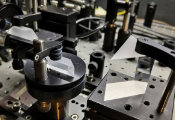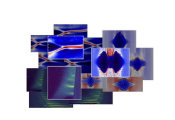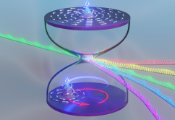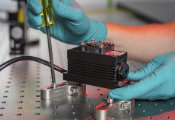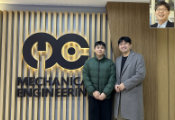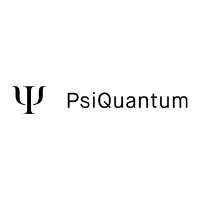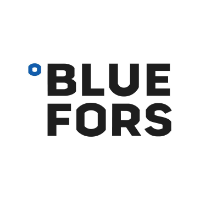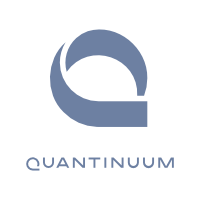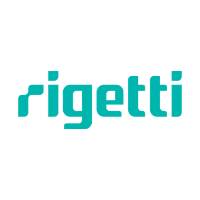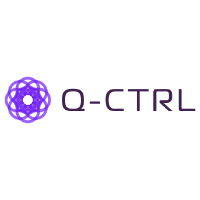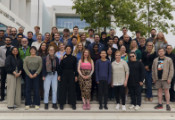Ultrafast Photonic Integrated Pockels Laser Sets a New Benchmark
June 05, 2025 -- The advent of photonic integrated circuits (PICs) based on thin-film lithium niobate has enabled significant advances in laser technology by leveraging the Pockels effect to endow the lasers with fast tuning capabilities. The Pockels effect is a phenomenon in which the refractive index of a material changes linearly with the applied electric field, making it possible to modulate the phase of light with high-speed electrical signals. This effect is harnessed in electro-optic devices, enabling ultra-fast, mode-hop-free frequency modulation in Pockels-tunable lasers.
Now, a new Pockels-tunable distributed Bragg reflector (E-DBR) laser, published in Nature Photonics, overcomes long-standing limitations, delivering record-breaking tuning speeds and performance. Traditional photonic integrated lasers were based primarily on silicon, but recent advancements have shifted the focus to new materials such as thin film lithium niobate, which offer significantly enhanced electro-optic properties and performance.
Pockels-tunable integrated lasers offer ultra-fast, mode-hop-free frequency modulation, with speeds reaching exahertz per second, exceptional linearity, and minimal noise. Until now, however, Pockels-tunable lasers have relied on one of two approaches: self-injection locking and Vernier-type external cavities. Both of these architectures require precise control and stabilization of multiple analog control voltage parameters for continuous operation, and are limited in output power and tuning range, due to the dynamics of microring resonators.
“Our laser eliminates the need for high-Q optical microring resonators by leveraging a micrometer-scale high-order Bragg grating manufactured at the wafer-scale in a commercial foundry. Combined with a low-cost gain chip, the result is a powerful, robust, and easy-to-operate Pockels-tunable laser” says Anat Siddharth, a doctoral assistant at the Laboratory of Photonics and Quantum Measurements (LPQM) led by Prof. Tobias J. Kippenberg. “The new laser achieves over 10 GHz mode-hop-free tuning, exahertz-per-second frequency modulation speeds, kHz-level intrinsic linewidth, with an output power of 15 mW. Its low tuning non-linearity at the 1% level and residual amplitude modulation of -32 dB surpass that of state-of-the-art semiconductor lasers, which require active linearization. Compared to previous photonic integrated lasers based on piezoelectric tuning, this laser offers a 100× higher voltage modulation efficiency of 550 MHz/V and a 10× broader tuning range”.
“The unique characteristics of this laser can benefit applications such as coherent LiDAR, precision gas sensing, and distributed fiber optic sensing,” says Simone Bianconi, a co-author and Postdoctoral researcher in LPQM. The EPFL team has demonstrated high-resolution coherent 3D LiDAR imaging with cm-resolution using this novel laser. The laser also enabled highly sensitive detection of hydrogen cyanide (HCN), thanks to its ability to precisely and rapidly target the vibrational spectroscopic features of this gas. “Our results showcase the potential for this laser to find application in remote sensing, ranging and environmental monitoring, where tunable lasers must be both high-performance and scalable.”
This work represents a paradigm shift in photonic integrated lasers: by combining the best of semiconductor gain media with lithium niobate electro-optic tuning, the laser achieves state-of-the-art performance without increasing complexity. This Pockels-tunable laser marks an advancement over earlier prototypes by enabling seamless integration into large-scale manufacturing, supporting the cost-effective production of thousands of units with high performance. The work leveraged the open-source Process Development Kit lnoi400 from the Lithium Niobate foundry Luxtelligence SA, a promising platform for rapid prototyping of novel designs in Lithium Niobate integrated photonics. As industries increasingly adopt scalable and distributed sensing systems, this advancement closes the gap between conventional semiconductor lasers and emerging hybrid photonic platforms—positioning the technology as a leading candidate for broad application.
This work was carried out in collaboration with Luxtelligence SA and Dr. Johann Riemensberger, an Associate Professor at NTNU, Norway. All devices were fabricated at the Center of MicroNanoTechnology (CMi), EPFL.


